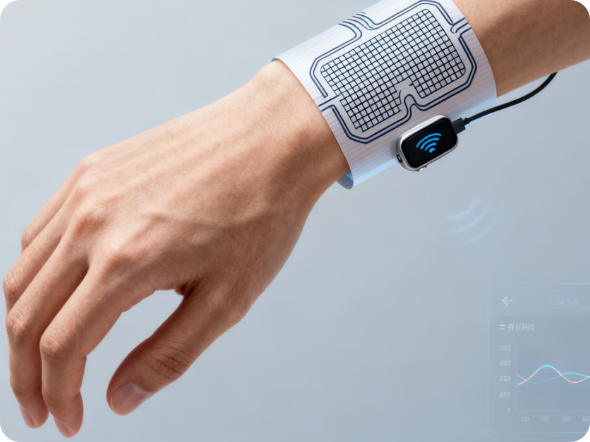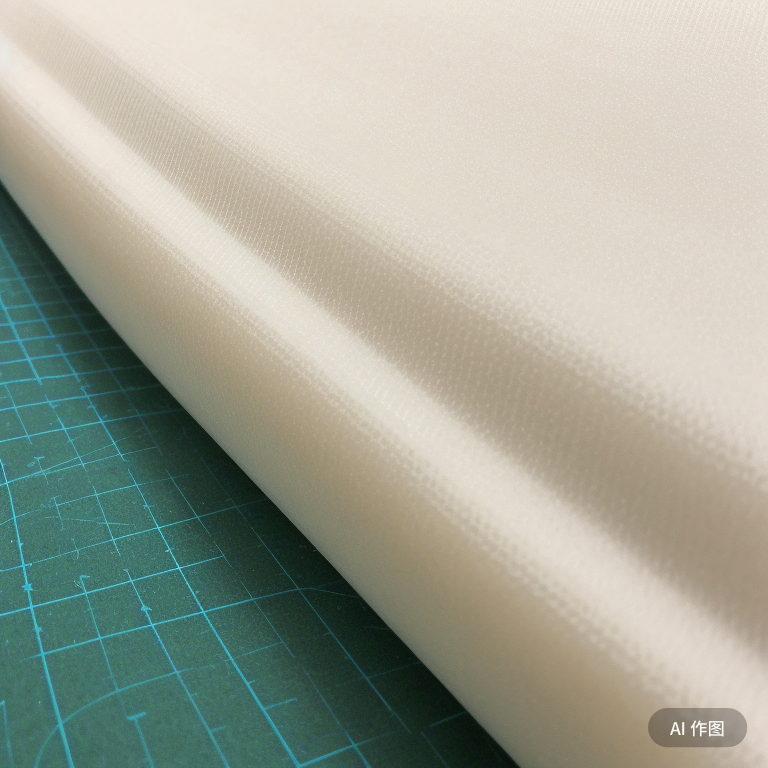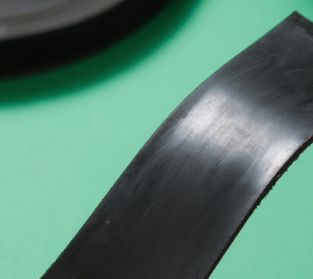Conductive Elastomers: Core Application Scenarios and Technology Implementation
2025/09/18
0
Conductive elastomers, with their unique advantages of “deformability + conductivity,” have already been implemented in multiple high-value-added fields. Their application expansion consistently centers on the needs for “flexibility, customization, and functional integration.” Here’s a detailed analysis of specific domains:
I. Flexible Electronics and Smart Sensing: From “Rigid” to “Skin-Level” Breakthroughs
1. Smart Wearable Devices: Human-Fit Sensing Core
- Key applications: Flexible pressure sensors (heart rate/spO₂ monitoring), skin temperature sensors, flexible electrodes (ECG/EMG acquisition)
- Material selection logic: Low modulus, high stretchability carbon-filled elastomers (CNT/TPU, graphene/silicone rubber) for comfort and sensitivity
- Typical cases:
- Apple Watch Series 8 “body temperature sensor”: Carbon black-filled TPE substrate with 0.01°C accuracy
- Xiaomi 手环 “flexible ECG electrode”: Silver nanowire/silicone composite with 10⁻³ Ω・cm resistance
- Key performance requirements: ≥300% stretch rate, ≤100ms response time, sweat resistance (pH 4-8 stability)
2. Flexible Robotics and Bionic Devices: Muscle-Mimicking Conductivity
- Key applications: Flexible robot fingers, bionic skin, flexible actuators
- Material selection logic: High elasticity + fatigue resistance; metal nanoparticle-filled PU or fluororubber
- Technology breakthroughs:
- Boston Dynamics “Handle” robot: Silver powder-filled silicone (10⁻⁴ Ω·cm) with 100,000 deformation cycles
- Chinese team’s “bionic octopus tentacle”: CNT/natural rubber composite for force sensing
- Key performance requirements: ≥100,000 cycles stability, ≤0.3 friction coefficient, ≥95% recovery rate
3. Flexible Displays and Touch Control
- Key applications: Foldable phone circuits, curved screen conductive gaskets
- Material selection logic: High transparency (AgNW/PI) or high conductivity (Cu-filled EPDM)
- Commercial case: Samsung Galaxy Z Fold5 hinge seal with Ni-coated Cu-filled silicone (40dB EMI shielding)
II. Energy Storage and Conversion
1. Flexible Batteries
- Key applications: Li-S batteries, Zn-air batteries, Na-ion batteries
- Material selection logic: Corrosion-resistant, conductive, lightweight composites
- Technology progress:
- CATL’s flexible Li-S collector: Graphene/TPU (20μm thick, 85% capacity retention after 1,000 bends)
- Fudan University’s stretchable Zn-air battery: 800Wh/kg energy density at 200% stretch
2. Flexible Supercapacitors
- Key applications: Instant power supply for flexible electronics
- Material selection logic: High surface area + conductivity composites
- Typical parameters: Carbon black/NBR composite with 200F/g capacitance and 90% retention after 10,000 cycles
III. Electromagnetic Interference Shielding
1. Consumer Electronics and 5G Devices
- Key applications: Enclosure gaskets, shielding covers, flexible films
- Material selection logic: High-conductivity metal-filled elastomers
- Commercial standards:
- Huawei 5G base station seal: Silver-filled silicone (60dB shielding, IP68 rating)
- Lenovo laptop shield: Ni-coated graphite/EPDM (35dB shielding, 1/3 cost of silver-filled)
2. Aerospace and Military Applications
- Key applications: Cable joint shields, radar windows
- Material selection logic: Wide temperature range (-60°C~200°C) fluororubber composites
- Performance requirements: ≤5dB SE change after 100 thermal cycles
IV. Biomedical Applications
1. Implantable Medical Devices
- Key applications: Pacemaker leads, neurostimulator electrodes
- Material selection logic: Biocompatible (ISO 10993), low-toxicity materials
- Clinical case: Medtronic pacemaker lead with Pt-Ir/silicone composite (10-year service life)
2. Wearable Medical Monitoring
- Key applications: Non-invasive glucose sensors, EMG patches
- Material breakthrough: Sweat glucose sensor with IL/PU matrix (0.1~10mmol/L detection range)
V. Smart Automotive Applications
1. In-Vehicle Flexible Electronics
- Key applications: Steering wheel touch buttons, ambient lighting circuits
- Material selection: Wide temperature range (-40°C~120°C) EPDM composites
- Case: Tesla Model 3 seat sensor with CNT/TPU (0~1000N detection range)
2. Battery Systems
- Key applications: Electrode buffer layers, battery pack seals
- Performance requirements: ≥500% stretch rate, ≤10⁻¹ Ω·cm resistivity
VI. Application Trends and Future Expansion
Current development is moving from “single-function” to “multi-functional integration”:
- Conductivity + self-healing: For robot skin with autonomous repair capability
- Conductivity + transparency: For flexible displays (≥90% light transmittance)
- Degradable conductive elastomers: For disposable medical devices that naturally degrade in vivo

















